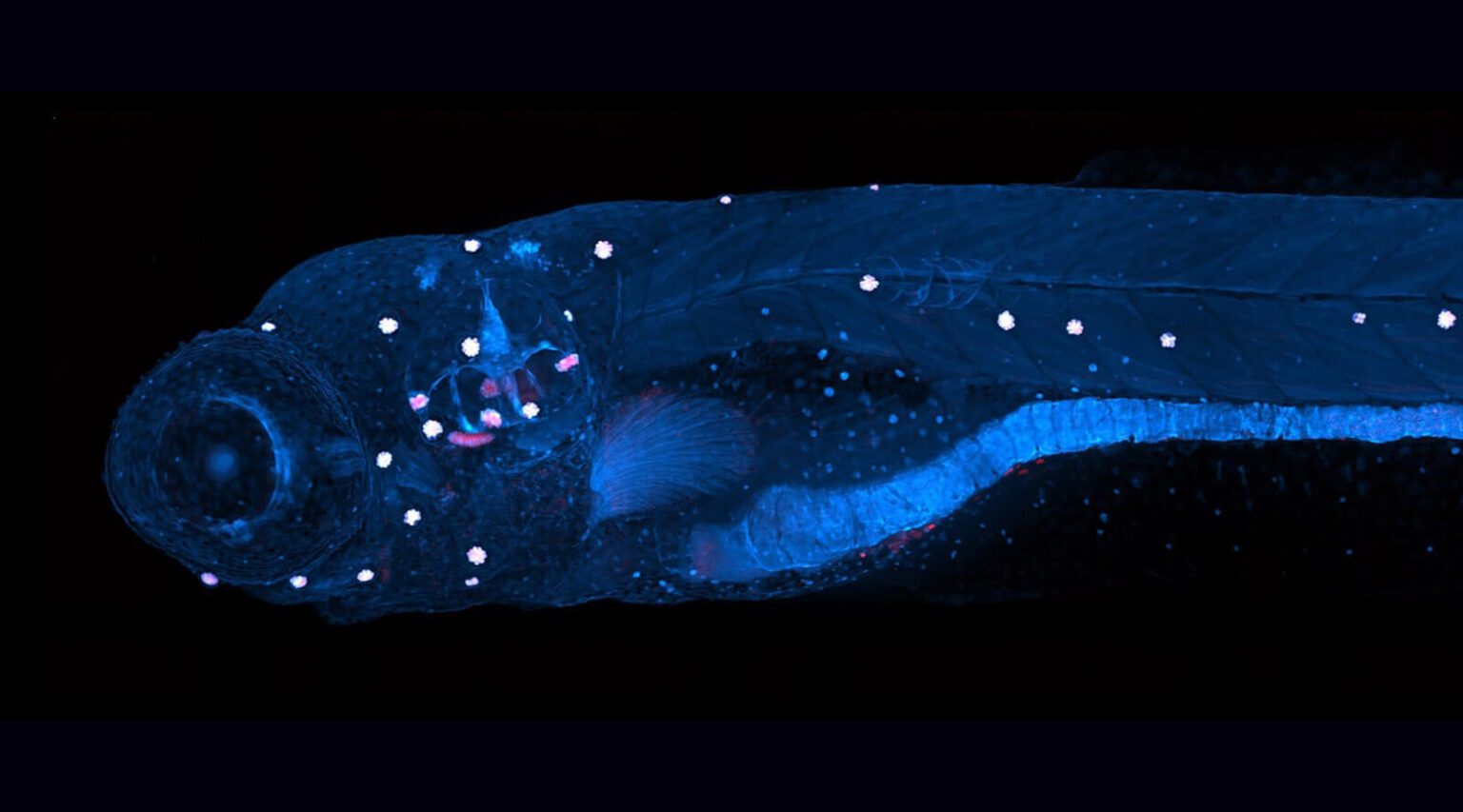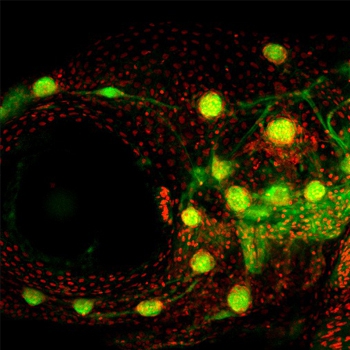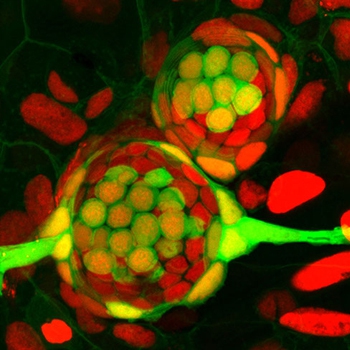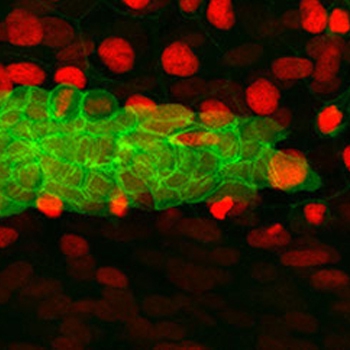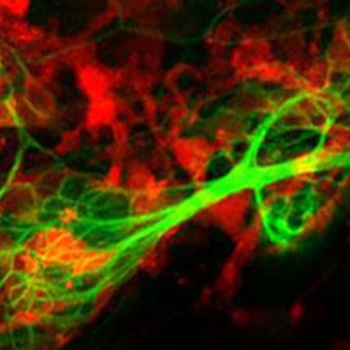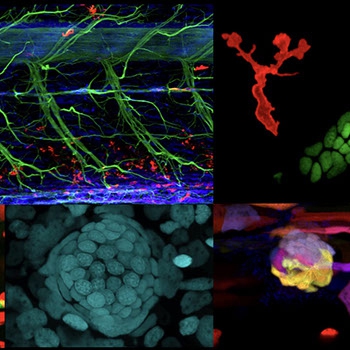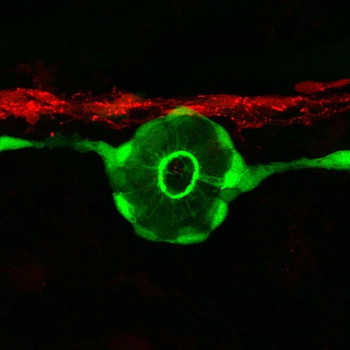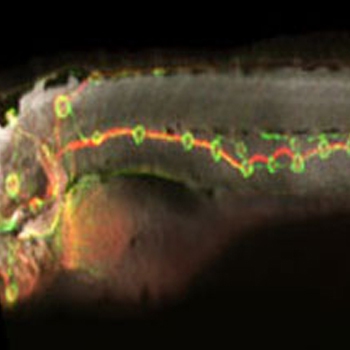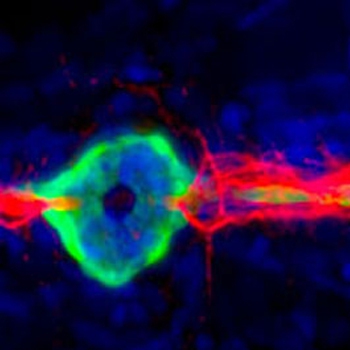Research
Research
Areas of research
Our research program aims to dissect complex developmental and regenerative processes in vivo and at high resolution. We are studying these processes both at the cellular and molecular/genomics level.

Zebrafish Sensory Lateral Line
We have identified the sensory lateral line of the zebrafish as a relatively simple system to shed light onto the molecular and cellular basis of complex vertebrate development and regeneration. The lateral line is an ideal organ to mechanistically dissect embryonic and post-embryonic processes because of 1) the accessibility of the sensory organs to direct observation and manipulation; 2) the relative simplicity of the lateral line system; 3) the similarity between lateral line hair cells and inner ear hair cells; 4) their ability to regenerate; and 5) the genetic tools available in zebrafish to molecularly dissect lateral line development (Lush et al. 2014 Dev Dyn; Kniss, Piotrowski 2016; Denans et al., 2019).
The lateral line is a sensory system for the detection of water movements to capture prey, avoid predators and schooling. The mechanosensory organs (neuromasts) are distributed in lines on the head and along the flanks of the animal. Neuromasts contain hair cells that are very similar to the hair cells in mammalian ears. Despite the unusual location of the hair cells in the skin, lateral line and ear hair cells develop by similar mechanisms and are derived from cephalic placodes. However, in contrast to the otic placode, the lateral line placode (also called primordium) undergoes a remarkable posterior migration towards the tail tip. This migration is a dynamic event that involves the primordium periodically depositing neuromasts until it reaches the tail tip, patterning the future lateral line.
Publications:
- Lush ME, Piotrowski T. Sensory hair cell regeneration in the zebrafish lateral line. Dev Dyn. 2014 Oct;243(10):1187-202. doi: 10.1002/dvdy.24167. Epub 2014 Aug 14. Review. PubMed PMID: 25045019; PubMed Central PMCID: PMC4177345.
- Kniss JS, Jiang L, Piotrowski T. Insights into sensory hair cell regeneration from the zebrafish lateral line. Curr Opin Genet Dev. 2016 Oct;40:32-40. doi: 10.1016/j.gde.2016.05.012. Epub 2016 Jun 5. Review. PubMed PMID: 27266973.
- Denans N., Baek S., Piotrowski T. Comparing Sensory Organs to Define the Path for Hair Cell Regeneration. Invited review. Annu Rev Cell Dev Biol. 2019 Oct 6;35:567-589. DOI: 10.1146/annurev-cellbio-100818-125503.
Hair Cell Regeneration (transcriptional control, epigenetics, innate immune system)
Humans in particular, and mammals in general, fail to regenerate mechanosensory hair cells in their inner ears leading to deafness. In contrast, fish, chicken and amphibians constantly replace dying hair cells through proliferation and differentiation of support cells. The molecular changes that prevent mammals from mounting a regenerative response are not understood. The major limitation is that the gene regulatory network underlying hair cell regeneration in lower vertebrates has not yet been elucidated. However, the knowledge of the precise timing when pathways are inhibited or activated during the regeneration process is important to design more sophisticated therapeutic strategies to induce mammalian hair cell regeneration. To determine the mechanisms that sustain a life-long ability to regenerate hair cells in fish we have been taking a multi-pronged approach:
- Determine the cell behaviors and cell lineages during regeneration
- Perform transcriptome analyses during homeostasis and regeneration (bulk and scRNASeq)
- Characterization of the epigenome during regeneration (ATAC and ChIPSeq)
- Characterization of the innate immune system involved in regeneration (scRNASeq, cell behavior)
- Mutagenesis screen to identify regeneration genes (ENU and CRISPR)
- Jiang L., Romero-Carvajal A., HaugJ. S., Seidel C.W. and Piotrowski T. (2014). Gene expression analysis of hair cell regeneration in the zebrafish lateral line. PNAS Apr8;111(14):E1383-92. PMCID:PMC3986165
- Romero-Carvajal A, Navajas Acedo J, Jiang L, Kozlovskaja-Gumbrienė A, Alexander R, Li H, Piotrowski T. Regeneration of Sensory Hair Cells Requires Localized Interactions between the Notch and Wnt Pathways. Dev Cell. 2015 Aug 10;34(3):267-82; PMCID: PMC4557215.
- Lush ME., Diaz DC, Koenecke N., Baek S., Boldt H., St. Peter MK., Gaitan-Escudero T., Romero-Carvajal A., Busch-Nentwich E., Perera A., Hall K., Peak A., Haug JS., Piotrowski T. Single cell RNA-Seq reveals distinct stem cell populations that drive sensory hair cell regeneration in response to loss of Fgf and Notch signaling. eLife 2019. Jan 25;8. Pii:e4443. PMCID:PMC6363392.
- Baek s., Tran N.T.T., Diaz D.C.,Tsai Y-Y., Piotrowski T. (2021). High-resolution single cell transcriptome analysis of zebrafish sensory hair cell regeneration. bioRxiv doi: https://doi.org/10.1101/2021.07.15.452338.
Cell migration and sensory organ development
Cell migration is a tightly coordinated but not well understood process during development. Elucidating the underlying mechanisms is not only important for embryonic development but is also highly relevant for cancer biology. Our work has greatly contributed to establishing the migrating lateral line primordium as a model for collective cell migration. We have identified important cell-cell signaling events that occur between cells in the leading and trailing zones of the migrating lateral line primordium (Aman and Piotrowski, 2008). We demonstrated that the activation of Fgf signaling by Wnt/β-catenin in trailing cells crucially depends on heparan sulfate proteoglycans (Venero Galanternik etal., 2015). In turn, Fgf signaling activates Notch signaling which controls organ size via the regulation of cell adhesion (Kozlovskaja-Gumbriene et al.,2017). We also discovered that the primordium deposits a trail of interneuromast cells in between these neuromasts which represent stem cells that give rise to postembryonic neuromasts (Grant et al., Neuron 2005, Lush et al., eLife 2014). In addition, we have made the important finding that non-canonical wnt11 (wnt11f1) regulates orientation of the sensory hair cells independently of the PCP pathway (Navajas Acedo et al., 2019). In a recent study we describe our discovery of ionocytes that invade the sensory organs and ensure proper hair cell function (Peloggia, Muench et al., 2021). The complex cellular signaling interactions resulting in the integration of stem cell regulation, cell fate specification and migration and to what extent these mechanisms are conserved during hair cell regeneration remain a mystery and form a central focus for our research.
Publications:
- Aman A, Piotrowski T. Wnt/beta-catenin and Fgf signaling control collective cell migration by restricting chemokine receptor expression. Dev Cell. 2008 Nov;15(5):749-61. PMID: 19000839. Highlighted in: Nature Reviews Cancer 2009. doi:10.1038/nrc2573.'
- Venero Galanternik M, Kramer KL, Piotrowski T. Heparan Sulfate Proteoglycans Regulate Fgf Signaling and Cell Polarity during Collective Cell Migration. Cell Rep. 2015 Jan 15; PMCID: PMC4531098.
- Kozlovskaja-Gumbrienė A.,Yi R., Alexander R., Aman A., Jiskra R., Nagelberg D., Knaut H., McClain M., Piotrowski T. Proliferation-independent regulation of organ size by Fgf/Notch signaling. eLife. 2017. Jan 13;6. pii: e21049. PMCID: PMC5235355.
- Grant KA, Raible DW, Piotrowski T. Regulation of latent sensory hair cell precursors by glia in the zebrafish lateral line. Neuron. 2005 Jan6;45(1):69-80. doi: 10.1016/j.neuron.2004.12.020. PubMed PMID:15629703.
- Lush ME, Piotrowski T. ErbB expressing Schwann cells control lateral line progenitor cells via non-cell-autonomous regulation of Wnt/β-catenin. Elife. 2014 Mar 18;3:e01832. doi:10.7554/eLife.01832. PubMed PMID: 24642408; PubMed Central PMCID:PMC3957165.
- Navajas Acedo J., Voas M.G., Alexander R., WooleyT., Unruh J.R., Li H., Moens C., Piotrowski T. PCP and Wnt pathway components act in parallel during zebrafish mechanosensory hair cell orientation. Nat. Commun. 2019. Sep5;10(1):3993. PMCID:PMC6728366.
- Peloggia J., Muench D., Meneses-Giles P., Romero-Carvajal A., McClain M.,Pan, Y.A., Piotrowski T. (2021). Adaptive cell invasion maintains organ homeostasis. Dev Cell. 2021 May 3;56(9):1296-1312.e7. doi: 10.1016/j.devcel.2021.03.027. PMID: 33878346.
Research Images
Fish Facility
The Reptile & Aquatics Facility provides the Institute’s research staff with the highest quality laboratory animal care and support services for non-mammalian species. Specialized husbandry is provided for a wide variety of animal species.
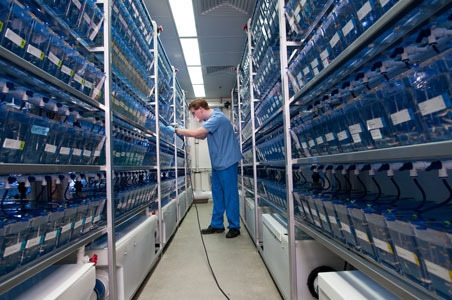
Species
Species currently housed include:
- Whiptail lizards (Aspidoscelis spp.)
- African House Snakes (Lamprophis fuliginosus)
- Veiled Chameleons (Chamaeleo calyptratus)
- Zebrafish (Danio rerio)
- Starlet Sea Anemone (Nematostella vectensis)
- Planaria (Schmidtea, Dugesia, Phacocata, Procotyla, Stylochus)

Staff
A knowledgeable, specially trained staff of dedicated technicians caters to the needs of the researchers. The Facility is fully AAALAC accredited and all housing, husbandry practices and veterinary care for the animals are in compliance with the Guide for the Care and Use of Laboratory Animals, the Animal Welfare Act, the Public Health Service Policy on Humane Care and Use of Laboratory Animals, as well as all other institutional, state, and local regulations.
Staff offer a variety of technical services based on researcher needs including breeding, embryo harvest, tissue sampling, genotyping, histology preparation and identification services.
Technology
The Reptile & Aquatics Facility uses the following equipment in its work:
- Aquatic Habitats Zebra Fish Multi-rack System Housing with YSI 5200 and TGP Monitoring
- Animal Plastics Rack Housing
Tatjana Piotrowski named Co-Director of Embryology Course at the Marine Biological Laboratory.
Former postdoctoral researcher, Jeremy Sandler, Ph.D., provided a #LookInTheLab highlighting the research happening in the Piotrowski Lab.
Is there a connection between the immune system and regeneration? Research from the Piotrowski Lab published in Nature Communications, found that macrophages are required for organ regeneration in a regenerating species.
